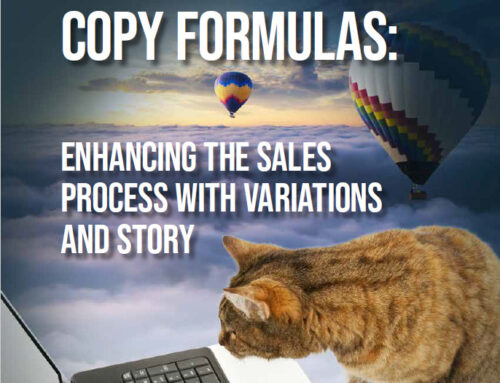I see that a lot of marketing departments are “trying to do more with less.” They’re outsourcing tactics, automating what they can, and just trying to get projects done.
Essentially, a lot of marketing departments are in “production mode” – just trying to get the next project or tactic crossed off their “to do” list so they can move on to the next one.
What’s getting lost in the shuffle?
- Consistent, Clear, Differentiated MESSAGING across tactics to give the customer a reason to take the next step
- Looking at everything from the customer’s point-of-view
- Tracking of results to be sure the tactic is working effectively (essentially, we’re outsourcing tasks and just assuming the outsourced resource knows how to market our company and products effectively)
I see this problem through SEO efforts, PPC Campaigns, web pages (and more). It’s like once the task is either outsourced and/or automated, the task is “off the list.” But there’s no marketing strategist looking at how effective these outsourced and/or automated tasks really are.
Results still need to be managed. And beyond the tactical results, someone needs to be looking at everything the way your customers would. No matter how good your outsourced resources are, it’s likely they will never know your business or customers the way you do.
Here’s what I’m seeing in this era of “if we can just get this automated . . .”
Your website landing pages aren’t effective
Have you looked at your website landing pages lately from the point-of-view of your prospects and customers?
Is it clear what’s different about your particular product or service? Is it clear what’s different about your company? (Oh, yes, you’ve referred me to the paragraph at the very bottom of the page that delivers your company’s story. Let’s see, isn’t it true that from 75% to 90% of visitors won’t scroll to the bottom of the page?)
Maybe you have the “why buy ours” on Home – but doesn’t your Google Analytics show that from 30% to 50% or more of your traffic doesn’t start there?
You say you’ve got the “why we’re different” on your About Us page – which gets anywhere from 10% to 30% of all visitors. So how is that helping to sell the other 70% to 90% of visitors?
Does your product or service page say the same thing your competitors say? If you read your product or service page, are YOU convinced that your offering is better? When’s the last time you looked at one of your landing pages that way?
For companies with many locations who want a location-specific landing page, we seem to have lost focus on what’s effective for persuading that customer.
I see automation that creates basic address and contact information for the location – but that isn’t being used to put together an effective landing page.
- For a multistate company, they have a listing below the basic address and contact information, for the specific services available at that location. But they’ve missed an opportunity to tell me WHY I SHOULD BE INTERESTED IN THEIR VERSION of these generic services available from dozens of other companies.
It seems that no marketing strategist has looked at these location-specific landing pages with an eye towards improving their ability to SELL.
Your pay-per-click ads don’t motivate the click
It seems that a lot of marketing departments outsource Google Ads PPC campaigns with good reason. It’s a tactic that requires specific expertise on how to set up and manage Campaigns.
But your PPC resource doesn’t know your company or products. And he or she may not be a copywriter. That means even though you’ve outsourced the task, you still need to specify the MESSAGING direction.
You need to be sure your PPC resource:
- Understands what benefits your product, service, or company has over the competition. This “why us (or ours)” needs to be in EVERY PPC ad description. Have you asked to see your PPC ads lately? Is there a strong reason to CLICK YOURS? Or maybe you need someone in Marketing to draft some Headlines and Descriptions for your PPC resource so you can give him/her an idea of your messaging direction?
If you have multiple locations for which PPC ads are running, the sheer volume of Ads shouldn’t be an excuse for PPC headlines and descriptions that don’t differentiate you – and that don’t motivate the click.
Using the automation available, your PPC person should still be focused on using effective messaging (but you may need to specify what that effective messaging should be).
Are you receiving monthly reports on Cost Per Lead or Cost Per Order from your Campaigns? Or even Clicks Per Campaign or Location? Do you know how cost-effective your PPC Campaigns are – or are you just “letting them run”? That’s a sure-fire way to waste marketing budget.
Your SEO titles and descriptions also don’t motivate the click
It’s 2023 and I’m amazed that companies who rely on Organic search engine traffic don’t really pay attention to whether their SEO is effective – or not.
You may have an SEO resource to handle both the technical as well as the copywriting sides of SEO. But few do both well.
Are you assuming your SEO resource knows what MESSAGING to use in your Page Titles and Descriptions to differentiate your listing in the search engines?
- Are you paying attention to what your SEO Page Titles and Descriptions are? (Anyone who actually knows SEO can spider your site and send you a spreadsheet.)
- Do you have the most important keywords at the beginning of each Page Title? (yes, this is an SEO best practice that you may not know – but also a good idea if your SEO resource isn’t paying attention to whether your Page Titles are too long and being truncated. I mention this because I suspect yours are . . .)
- Do you have the “why should I click to your page” copy at the beginning of each Description (because your Descriptions may be too long and critical copy is being truncated on google.com and not even being shown!)
- Do you know if your site has duplicate pages or broken links? (which a monthly spider of your site would reveal)
If you’re paying for monthly SEO services, that should mean your site is being spidered regularly. So you shouldn’t have lots of duplicate pages, broken links, Page Titles and Descriptions that are too long, etc.
It should also mean that your new blog posts or pages are having Page Titles and Descriptions crafted monthly, with text links added on keywords within the post. But too many times, the SEO is on “autopilot,” especially with blog posts. The headline of the blog post is automatically loaded as the Page Title. And many times, a Description isn’t added at all.
That is a recipe for Blog listings that aren’t even appearing on search engines or that aren’t being clicked – because the key elements of the post aren’t at the beginning of Page Title and Description.
Marketing automation when applied to websites, SEO, and PPC is a TOOL. It doesn’t replace the mind of a marketing strategist that crafts messaging that differentiates, views everything from the point-of-view of the customer, and tracks and analyzes results.
Seems we need to put a little more “Marketing” in our automation for 2023.
Need more help with improving your digital marketing efforts? Our new BEST-SELLING book, “The Results Obsession: ROI-Focused Digital Strategies to Transform Your Marketing” is now available on Amazon!

Learn more about The Results Obsession and see the Table of Contents
The book includes chapters on Messaging Strategy, Characteristics of Great Copy, Website Copy, Email Copy, PPC Campaigns, SEO, and more.






Leave A Comment